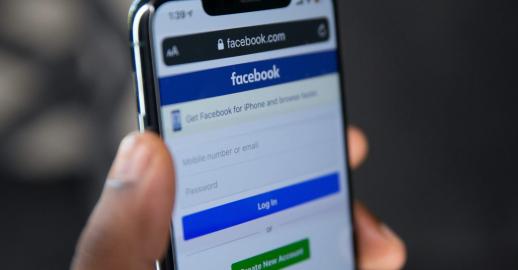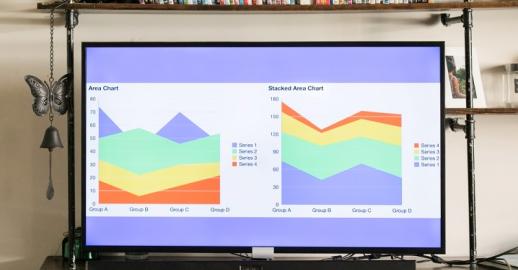3 Steps For Shedding Some Light on Dark Social

18th September 2015
Dark social. What on earth is it – hooded teenagers huddled down gloomy alleyways communicating only via Facebook Messenger because they’ve lost the power of speech? Ninja warriors conducting business deep in the unindexed shadows of the underground web?
Fortunately, it’s nothing quite that ominous, despite the sinister name. Dark social is essentially social sharing which cannot be tracked. Regular social sharing can be tracked by metadata that is attached to the link that has been shared. This shows up in your analytics program, letting you know that your visitors have come from Facebook, Twitter or other social networks. Dark social includes links that have been shared but have no such data attached to them. These links could have been shared via email, instant messaging applications, or text messages.
The name ‘dark social’ was coined in 2012 by Alexis C. Madrigal, who wrote an interesting article explaining the concept in The Atlantic. He found that 69% of social referrals came from dark social. That was three years ago, but since then there have been other reports and studies that claim this number is slightly higher. This means you could well be underestimating the impact social media is having on your website traffic.
Finding dark social in Google Analytics
While links from social media are tagged to show you which channels they came from, and links from most websites are tagged to tell you the site they have come from, dark social is simply labelled as “direct / none”. Analytics doesn’t know where they have come from or who has referred them. As there is no referrer data attached to these links, they show up in Google Analytics as Direct traffic. But not all of your direct traffic will necessarily come from dark social, making this particular set of traffic a bit of a mystery. Direct search includes the following:
- Direct links typed directly into the browser’s address bar
- Links stored in users’ bookmarks
- Links from emails (depending on the email provider)
- Links from phone apps that don’t always carry referrer data
- If a secure site links to a non-secure site, visits to the non-secure site will not carry referrer data showing where the visits have come from
- Some organic search traffic is recorded as direct traffic due to browser issues
How much of your traffic comes from dark social?
I decided to have a look at SilverDisc’s Google Analytics account for August to see if I could figure out how much of our traffic for that month came from dark social. I started by going to Acquisition and clicking on channels, then Direct. Here I see a list of pages and the number of visits for each. For August, Direct visits make up 18.5% of our total traffic, so I need to find out how much of this Direct traffic could be from dark social.
Eliminating homepage visits
I tried to figure it out by process of elimination, using the list above as a guide. First, I needed to get rid of visits to the homepage, because these are the ones that are most likely to have been typed into the address bar. Anyone can just type in www.silverdisc.co.uk, but who is going to remember or take the time to type in a very long URL, such as the URL of this blog post? Those long URLs are more likely to come from dark social than homepage visits are. So I created a segment to exclude the visits where the homepage was the landing page, and I was left with those long URLs.
This brought our statistics for Direct traffic down from 18.5% to 13.6%. This meant that anything up to 13.6% of our total traffic could come from dark social. But this wasn’t quite accurate enough and needed to be refined some more.
Eliminating bookmarks and URLs typed into the address bar
What about that cool autocomplete thing browsers do now? If you start typing in our web address and you have visited a page of the website before, your browser may autocomplete to the URL of a blog post you have already visited, so our theory of people not typing in long URLs may not be true as your browser can do all the hard work for you.
To take this into consideration, I decided to look at the New Users data rather than the Sessions column. This eliminates anyone who has visited the website before, and therefore it also eliminates visits that come from bookmarks.
Once I did this, I could see that in August we had direct visits from 87 new users. With a total of 1,052 users across all traffic types, this means 8.27% of our users were:
- new users…
- classed as direct traffic…
- who didn’t land on the homepage…
…and could therefore potentially be dark social traffic.
Eliminating organic search traffic
But what about the fact that some organic search traffic is recorded as direct traffic? (This link claims it’s 10-20% for Chrome, Firefox and Safari users). So I took 20% off my 87 users and was left with 70.
This means that 6.65% of our users were:
- new users…
- classed as direct traffic…
- who didn’t land on the homepage…
- and probably didn’t come from organic search…
…and could therefore potentially be dark social traffic.
Conclusion
This is how our list looks now:
- Links typed directly into the browser’s address bar
- Links stored in users’ bookmarks
- Links from emails (depending on the email provider)
- Links from phone apps that don’t always carry referrer info
- If a secure site links to a non-secure site, visits to the non-secure site will not carry referrer data showing where the visits have come from
- Some organic search traffic is recorded as direct traffic due to browser issues
You can also rule out links from your own outbound emails by adding UTM tracking to your URLs when you send out your newsletters or mailshots. This means that all the links clicked on in your emails are filed under Emails, and whatever is left (for example emails users have sent to each other to share your link) is filed under Direct and counts as dark social.
So does this mean that 6.65% of SilverDisc’s traffic is dark social? Well, not necessarily. We still need to consider links from phone apps and secure sites which don’t show referrer information. Also by only counting new users in order to eliminate bookmarks and URLs typed into address bars, I could be excluding users who have visited the site before but are still engaged in dark social. As you can see, it’s not an exact science and there are no definite answers. But this does give us more of an idea of how many people are sharing our links under the radar.
So how can you get more traffic from dark social? There is only really one answer to this, and that’s to create great content that people will want to share. As we have discovered, you may already be getting more attention through social media than you realise, so keep it up by writing useful and interesting content that your target market will love.






